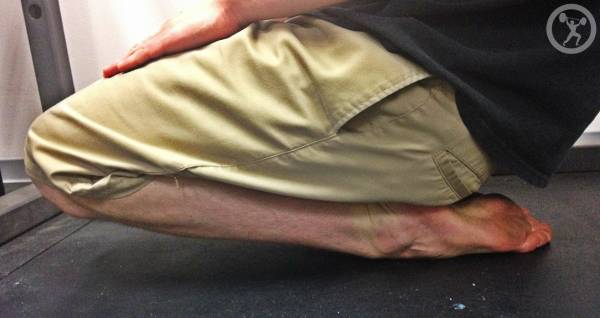I’ve sprained and rolled my ankles a number of times in my life playing sports and in other activities. It’s never fun to get hurt. But the truth is your ankles can become a lot more indestructible than most people would imagine.
Think about what so many people do if they do suffer a sprain: they wrap up the ankle for extra support. But what if your own body provided sufficient support for the vast majority of activities, even capable of handling a wrong step?
Making Your Body Injury Proof
The other day I was talking to someone about trail running. He commented that he couldn’t believe so many people ran in this particular area because there are so many roots and rocks that it would be easy to roll an ankle.
While it is true that trail running presents more opportunities for injury, as opposed to running on a flat track, that misses the great point. With the proper build-up your body can handle things that might otherwise cause sprains. And in fact, running on uneven ground can help build this ability as well.
You have a choice. You can either avoid things that could hurt you, like working out in general, and then you’ll be weak and fragile. Or you can take the right steps to make your body more injury proof. While a general workout program will help with injury prevention, a few outside-the-box drills will better serve your efforts.
And beyond injury proofing you, these drills may also be helpful in rehab and retaining your flexibility and mobility into old age. Mobility training alone is great. However, most of it is done with your body not supporting any weight. The following drills all help with mobility, but in weight-bearing positions.
Drill 1: Sides of Foot Walk
Many people place too much weight either on the inside or the outside of their foot when they stand and walk. This exercise is used to help correct this by going the opposite way of our natural gait tendency. It also trains the lateral tilting action of the ankle joint.
- From a normal standing position, raise the insides of your feet so the weight comes to the outside of both feet. Now, walk around.
- For the second half of this drill, start with your feet slightly wider than shoulder width. The knees must cave inward as you roll your weight onto the insides of the feet. Now, walk around in this manner.

Both of these drills look funny, but they train your body in a position you’re not used to. A little practice of both is great, but you’ll want to primarily focus on the one opposite to how you use your feet naturally when you walk.
So, if you walk duck-toed and more weight is typically on the insides of your feet, you’ll want to balance it out with walking on the outsides of your feet. If you walk pigeon-toed, you’ll correct this by walking with the weight on the insides of your feet.
Since most ankle sprains occur when the ankle is rolled to one side or another, these two exercises train your ability to bear weight in these compromised positions.
Drill 2: Top of Foot Kneeling Balance
This drill stretches the top of the foot and the ankle joint. From a seiza, or kneeling position, with the top of the feet on the ground, lean back so that your knees lift off of the ground. You’ll balance across the top of your feet, though you can support yourself with your hands against a wall if needed. Hold this position for time.
If you don’t have the flexibility to get into the seiza position, you can place a rolled-up towel between your feet and butt to support you, allowing you to sit on the towel and still get into the desired position.

Doing all three of these exercises will only take a minute or two, yet can go a long way towards keeping your ankles and feet mobile and injury free. There’s plenty more possible drills, but you don’t need more than these three really. And it doesn’t take long. Just a couple minutes every few days is sufficient to get a positive training effect.
Photo 1 courtesy of Shutterstock.






